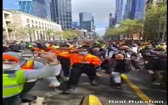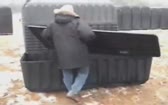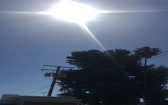Advertisement
Retired F-16 Pilot - Earth is Flat
Retired F-16 Pilot - Earth is Flat - By Taboo Conspiracy: https://www.youtube.com/watch?v=q_JJB1aXBHE
- Category: Experience,Grand Illusion,Research /Investigation/Report,Reveal /Spill the Beans /Admit
- Duration: 12:26
- Date: 2021-04-25 09:03:01
- Tags: no-tag
23 Comments
Video Transcript:
I received an email from a retired F-16 pilot whose name is Mike. His new YouTube name is FE Vyper-16, a good name, so watch for them in the comments. I spoke to Mike on the phone today, but he wishes to remain anonymous and I will certainly honor that. Again, if you are a professional and would like to talk to me about the unique perspective of the flat earth related to your expertise, please email me at tabooconspiracyatgmail.com. I will always keep your information confidential if that is what you want. I do hope this information will lead to more flat earth investigations because these radar systems and the aircraft using them are fascinating and the flat earth evidences they introduce are indisputable. I wish I could share my full discussion with Mike because it was awesome as this retired Air Force pilot confirmed that he definitely flew over a flat and stationary earth and that none of the systems of his aircraft were designed with a curvature in mind. Now I might make some mistakes here and I do apologize for that as the information was complex for me, but Mike did say that he might stick around and answer your legitimate questions in the comment section. In F-16, can fly up to 1500 miles per hour and may be intercepting another craft flying in the opposite direction at the same or a different altitude at similar speeds. Breaking it down 1500 miles per hour is 250 miles in just 10 minutes. As Mike discovered, the paramount problem with the globe is 8 inches per miles squared. The infamous and quite accurate formula that calculates the alleged curvature drop if the globe real. That easy to understand formula absolutely destroys the globe because no one has seen or accounts for that insane amount of curvature drop ever. But for an F-16 flying at 1500 miles per hour, that would be a curvature adjustment of approximately 42,000 feet in just 10 minutes. But no pilot makes that ridiculous curvature adjustment. But think about the problem when an F-16 is quickly intercepting another aircraft coming from the other direction. Consider the unbelievable amount of curvature adjustments that would be necessary for an Air Force pilot on intercept. And yet, Air Force pilots never learned about the curvature drop in training or otherwise as confirmed by Mike. What's also fascinating is the fact that Air Force pilots learn and experience it daily that when a distant aircraft is at the horizon, it is at the same altitude. If the distant aircraft is above the horizon, then the pilot knows the aircraft is higher. If the distant aircraft is below the horizon, then the aircraft is at a lower altitude. I think this photograph shows what I'm talking about. You can see which planes are higher and lower based on the horizon line. There is more proof that the horizon does indeed rise with eye level, which is an absolute impossibility under the globe. But getting back to the non-existent curvature adjustments, the globe probably would probably answer that the aircraft automatically adjusts because of some magical force of gravity, automatically pulling the nose down of the aircraft to strangely maintain equal altitude, or that the varying air pressure densities keep the aircraft at the same altitude. I've heard both of these silly explanations, but that brings us to Mike's information. This is with respect to the AN-APG 68 long-range radar system. It has a range up to 184 miles. Here's a picture of what the operation screen looks like in the cockpit of an F-16. This will make more sense in a little bit. Essentially as an F-16 pilot, might put fly with a wingman or maybe three other F-16's information. Each pilot, using his radar system, would then have the responsibility to sweep a key portion of the sky in front of the aircraft based on the F-16's position. This is for maximum efficiency. For example, if there were two F-16's information, the one on the left would sweep a section of the sky on the left. The F-16 on the right would sweep a section of the sky on the right. Make sense, right? These aircraft don't sweep the entire sky, but only a key angled segment of the sky, like 60 degrees up, 60 degrees down, 60 degrees to the left, or 60 degrees to the right. So if say four F-16's are information, one pilot may have the duty to sweep his radar looking for aircraft at 10,000 feet above on the right side. Do you see the problem yet? What is a radar sweep at 10,000 feet on the alleged globe at 80 miles ahead because 10,000 feet at Mike's point of view would not be 10,000 feet 80 miles ahead of the enemy's position? In actuality, that aircraft would be much higher than 10,000 feet than what the F-16's radar would indicate if we lived on a globe. Instead, the computer radar system is based on a flat map. None of the radar readings would be accurate in an enemy aircraft would exploit these problems all the time if we lived on a globe. Just think about it. How could you lock? Track and acquire an enemy aircraft when the height curvature adjustments would throw the whole matter into disarray. Here's a short, four-minute clip from an online tutorial for an F-16 simulator that talks about how the F-16 radar system works. But I think I'll help you understand Mike's information, but you're welcome to skip ahead for a minute if you're impatient. We are positioned here looking that way. Range 0, a quarter, half, three-quarters full. And that depends on our range scale here. So if we were on 80, that's 80 miles, 60 miles, 40 miles, 20 miles. If we were on 10 miles, 10, 7 and a half, 5, 2 and a half, and so on. So currently, azimuth is six. This is the width of the slice of cake, the width of the scam-vone. That means 60 degrees to the left, 60 degrees to the right. If we now go to a three, it's now 30 degrees to the left, 30 degrees to the right, total 60 degrees. The limits are shown by that line there and that line there. Now if I were to move my cursor off the edge, you can see if follows where I go to the max limits of the radar, the bump stops, they're called 60 here, 60 degrees there. If we want to go again, we can go to 10 degrees, 20 degrees total. And you can see we can move left and we can move right all the way to the bump stops. Let's put it back on 60. At this point, you might think, well, why would you not always have it on full width? Well, the reason is because of the refresh rate with the B sweep. That is the B sweep of the bottom there going right and left and right and left. Remember every time it goes hits the bump stop, it goes down a notch, hits the bump stop, goes down a notch in terms of elevation until it finishes bar. The bigger the wider you scan and the more bars you have, the bigger your refresh rate is, the harder it is to keep contacts on screen. And it is an absolute art form to keep contacts on screen and balance the situation and awareness with your ability to see and track targets. So that's as of now we have our elevation, the thickness of our slice of cake. How many bars do we want? Remember each bar is about, it depends on different radars. There are usually about five, three to five degrees, which are well four bars at the moment. So that means four bounces between bump stops, four B sweeps before it resets. We can have one. We can have two. So this will give us the maximum size elevation. This will give us the smaller size. This will give us the medium size. But the bigger the size is, the lower the refresh rate, the harder it is to get a B to lock track acquire and keep a track of these targets. Okay, N3 doesn't do anything at the moment. So next we've got our carrots. We've got our azimuth carrot or our B sweet. That's this guy here. That is where the antenna is pointing. 60 degrees left, 60 degrees right is where the bumps are. This is our elevation. So that you see it will go down in four bars, then back up to the top. And this is this radar can handle 60 degrees left, 60 degrees right, 60 degrees up, 60 degrees down. So this is zero degrees azimuth, this is zero degrees elevation. That is up there somewhere 60 degrees up, 60 degrees down. If we want to change our other television, then I'm going to press the button and we can move it up here like that. And down, want to move it down, what's wrong button, we can move it down there like that. Look how if I aim it down, these contacts disappear. These contacts have disappeared. They're now fading. And that's because by slice of cake is aimed too far down and it's below them. If I want to regain them because I know they're roughly co-outed you, then I move to the middle and we'll start picking them up after a couple of sweeps. Okay. Now, I know what you're thinking. I can know what angle this elevation is set to but in real terms what actual altitude is that set to and that's where these two numbers here. You'll be using these to all the time. Note that wherever I move this cursor, these two numbers change. You will always be looking at them. What they are saying is at the range that I've got this cursor set, which currently is 40 miles. Remember, we're in 80 miles there. So 80 miles there, zero miles there, 40 miles there. At 40 miles, if I drew a plum line, that is a vertical up to down line through our slice of cake, our scam zone at 40 miles distance from me, it would intersect. That plum line would intercept the top of the scam zone at 54,000 feet ASL and at the bottom minus 5,000 feet ASL theoretical. I don't want to bore you much longer, so let's get to my female. I have a bit of knowledge from my days as an F-16 pilot that I need to share with someone. I respect your work and thought you might be another great person to pass this to. I don't have nor do I want a platform, so here you go. If you decide to verify what I'm telling you and have questions, feel free to contact me here. This will be tough to illustrate with words, but I'll try. The F-16 has radar, called an APG-68. At least it did 18 years ago when I last flew it. The radar, in air to air mode, has the ability to scan ford plus or minus 60 degrees of the nose, 120 degrees, plus a back and forth elevation, selectable of 1, 2, or 4 bars or rows. In other words, in one bar, it simply sweeps, level, relative to the aircraft bank, back and forth at the same elevation. In two bars, it sweeps all the way, then drops a certain amount to sweep back, thereby doubling the volume of air space searched. In four bar, it does the twice, doubling it again. Think of the radar beam as pointing a flashlight. The elevation of the sweeps are pilot-controllable. The pilot can tell what the elevation of the sweeps are in the display. At the cursor position, the top and bottom altitudes of coverage are displayed at the range of the cursor, and this altitude is controllable with the L-stroke, a little wheel on the throttle. We use this because if my search responsibility is 10,000 feet above, I can roll up and cover my area more efficiently. I know this is probably clear as mud, but bear with me. Obviously, you can determine the width of the sweeps at various ranges of your search. In other words, the distance between the sides of your scope. If I run the cursor out to 80 miles, I saw Silesia's Triangle Math gives you 138 miles from side to side. Curvature Math gives you a hump on my nose of 12,700 feet. In other words, if I roll up to search 10,000 and above, and set that in the center of the scope. I'd be 22,700 feet above on the sides of my scope. Right? Well, non-practice. If I run my cursor out to any distance, the display shows the same on the left side, middle, and right. So my conclusion is the engineers are going to get fighter pilots shot down because they didn't take an account to curvature of the Earth, bastard, or the Earth is flat. That's it. That's my female. I hope that was semi-understandable. The globe simply doesn't exist in reality, and now we have a retired F-16 pilot who confirms the same. Hope you enjoyed the video. Love to all.










 Donate
Donate









